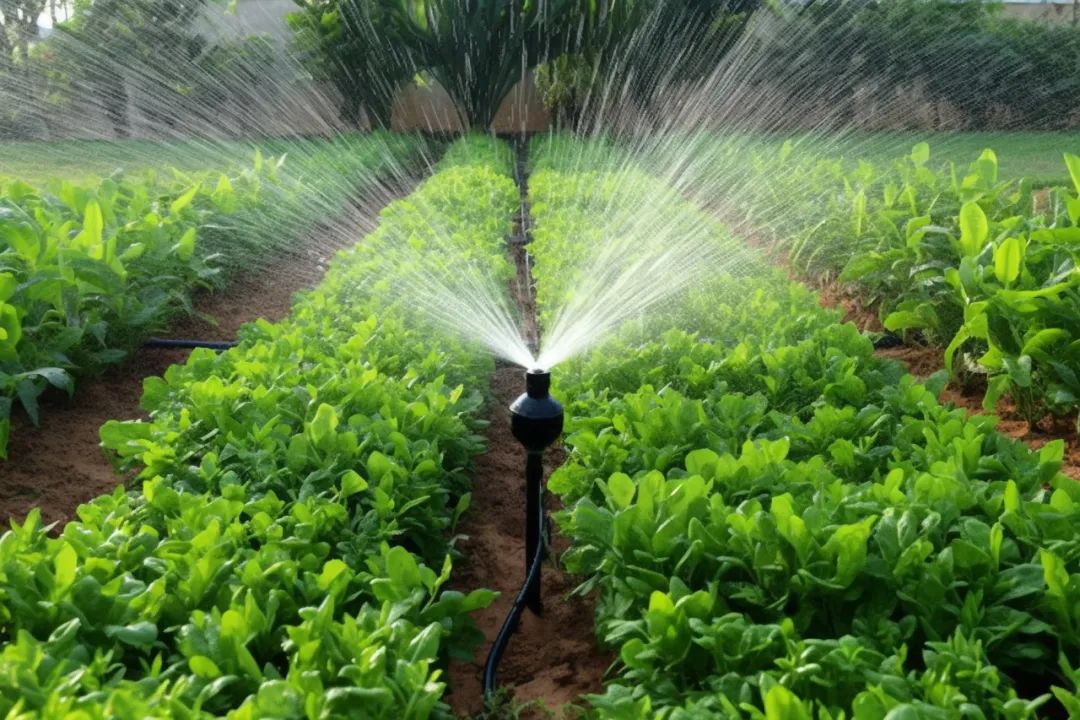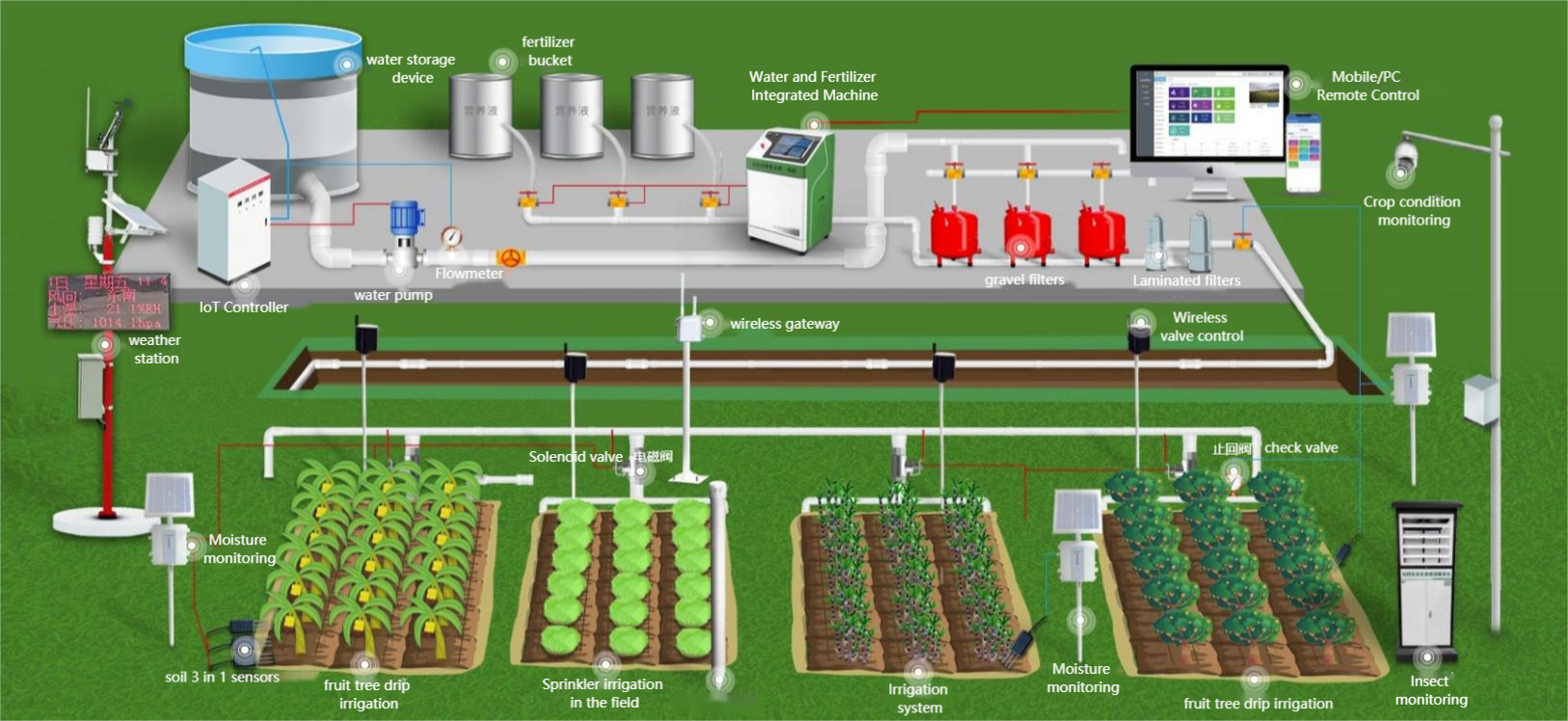

— Blogs —
—Products—
 Consumer hotline +8618073152920
Consumer hotline +8618073152920 WhatsApp:+8615367865107
Address:Room 102, District D, Houhu Industrial Park, Yuelu District, Changsha City, Hunan Province, China
Product knowledge
Time:2025-04-02 11:37:28 Popularity:82
In the development of modern agriculture, soil moisture sensors have gradually become one of the core technologies for enhancing production efficiency and sustainability. By continuously monitoring the moisture content in the soil, these sensors provide precise data support for irrigation management, crop growth monitoring, and overall agricultural management.

Soil moisture sensors measure changes in the moisture content of the soil to determine its humidity. Their basic principles typically involve resistive, capacitive, or Time Domain Reflectometry (TDR) technologies:
1. Resistive Sensors: These sensors estimate soil moisture by measuring the conductivity of the current in moist soil. The higher the moisture content, the stronger the conductivity of the current.
2. Capacitive Sensors: These sensors measure the changes in the soil's capacitance to infer the water content. They respond quickly, are highly accurate, and are suitable for various types of soil.
3. TDR Technology: This method uses electromagnetic waves, measuring the reflection time to determine soil moisture. It is especially suited for high-precision agricultural environments.
Soil moisture sensors can monitor soil moisture levels in real time, helping farmers make scientific irrigation decisions. Based on the data provided by the sensors, farmers can precisely control the timing and amount of irrigation, preventing over-irrigation or insufficient irrigation. This improves water resource utilization efficiency and reduces water wastage and environmental burden.
In greenhouses and tunnels, soil moisture is crucial for crop growth. By using soil moisture sensors, farmers can adjust the irrigation system in time to ensure that the soil moisture remains within the optimal range for plant growth. The sensors can also interact with climate control systems to automatically adjust both humidity and temperature, creating an ideal growing environment.
Precision agriculture involves managing soil moisture in a detailed manner for each piece of land, enabling differential irrigation. The moisture differences across various regions of a field can be revealed by the sensors, allowing farmers to adjust irrigation locally. This precise agricultural method enhances resource utilization, optimizes crop growth conditions, and increases yield while improving product quality.
Soil moisture is closely related to plant health. Both excessive or insufficient moisture can create favorable conditions for pests and diseases. By monitoring soil moisture fluctuations, farmers can predict changes in plant health, detect early signs of pests and diseases, and take necessary preventive measures. This effectively reduces the occurrence of pests and diseases, improving both crop quality and yield.
In addition to agricultural applications, soil moisture sensors also play a significant role in environmental science. By monitoring soil moisture over an extended period, researchers can analyze the impact of climate change on soil and water environments, providing scientific data for the development of environmental protection policies.
Soil moisture monitoring stations are high-precision devices that monitor various parameters, including soil moisture, temperature, and conductivity. These stations provide comprehensive data support for agricultural production, helping farmers make more scientific management decisions.
Soil moisture monitoring stations help farmers precisely control irrigation time and quantity by monitoring soil moisture changes in real time, preventing over-irrigation and water wastage. They ensure that crops receive the appropriate amount of water at all growth stages, improving water efficiency and reducing the risk of soil salinization.
Soil moisture monitoring stations also have early warning functions, detecting potential drought risks in advance. By monitoring continuous changes in soil moisture, farmers can adjust irrigation plans in time, preventing catastrophic losses. This is especially critical in drought-prone areas, where timely water management is vital for crop growth.

With data provided by soil moisture monitoring stations, farmers can understand the water needs of crops at different growth stages and make corresponding adjustments. This intelligent crop management approach helps increase both yield and quality while reducing production costs.
Soil moisture monitoring stations are not limited to agricultural applications; they also have important roles in ecological and environmental studies. They provide essential data support for analyzing the impact of climate change and human activities on soil moisture, aiding in environmental protection decision-making.

Conclusion
With the continuous development of smart agriculture, soil moisture sensors and soil moisture monitoring stations are becoming indispensable technological tools in agricultural production. By providing precise soil moisture monitoring, these tools not only help farmers achieve efficient irrigation management but also offer scientific insights into crop growth, pest and disease control, and environmental protection. In the context of global climate change and water resource shortages, the application of these technologies will further promote sustainable agricultural development, helping farmers improve production efficiency, reduce costs, and contribute to environmental protection and resource conservation.
1.NBL-S-THR Soil Temperature Moisture Sensor datasheet
NBL-S-THR-Soil-temperature-and-moisture-sensors-Instruction-Manual-V4.0.pdf
2. NBL-S-TMC Soil Temperature Moisture EC Sensor datasheet
NBL-S-TMC-Soil-temperature-and-moisture-conductivity-sensor.pdf
3. NBL-S-TM Soil Temperature Moisture Sensor datasheet
NBL-S-TM-Soil-temperature-and-moisture-sensor-Instruction-Manual-4.0.pdf
4. NBL-S-TMCS Soil Temperature, Moisture, Conductivity and Salinity Integrated Sensor
NBL-S-TMCS-Soil-Temperature-Humidity-Conductivity-and-Salinity-Sensor.pdf
Related recommendations
Sensors & Weather Stations Catalog
Agriculture Sensors and Weather Stations Catalog-NiuBoL.pdf
Weather Stations Catalog-NiuBoL.pdf
Related products
 Combined air temperature and relative humidity sensor
Combined air temperature and relative humidity sensor Soil Moisture Temperature sensor for irrigation
Soil Moisture Temperature sensor for irrigation Soil pH sensor RS485 soil Testing instrument soil ph meter for agriculture
Soil pH sensor RS485 soil Testing instrument soil ph meter for agriculture Wind Speed sensor Output Modbus/RS485/Analog/0-5V/4-20mA
Wind Speed sensor Output Modbus/RS485/Analog/0-5V/4-20mA Tipping bucket rain gauge for weather monitoring auto rainfall sensor RS485/Outdoor/stainless steel
Tipping bucket rain gauge for weather monitoring auto rainfall sensor RS485/Outdoor/stainless steel Pyranometer Solar Radiation Sensor 4-20mA/RS485
Pyranometer Solar Radiation Sensor 4-20mA/RS485
Screenshot, WhatsApp to identify the QR code
WhatsApp number:+8615367865107
(Click on WhatsApp to copy and add friends)